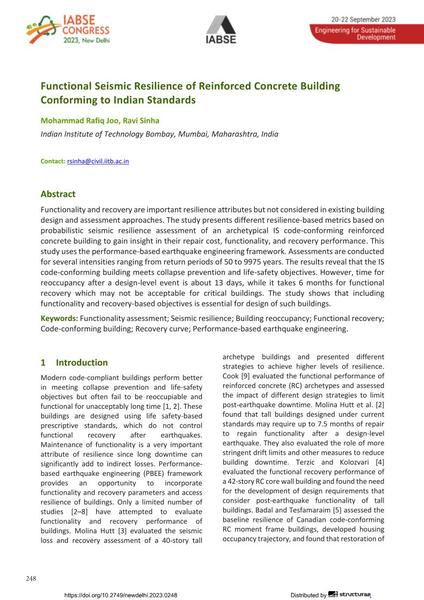Functional Seismic Resilience of Reinforced Concrete Building Conforming to Indian Standards

|
|
|||||||||||
Bibliografische Angaben
| Autor(en): |
Mohammad Rafiq Joo
(Indian Institute of Technology Bombay, Mumbai, Maharashtra, India)
Ravi Sinha (Indian Institute of Technology Bombay, Mumbai, Maharashtra, India) |
||||
|---|---|---|---|---|---|
| Medium: | Tagungsbeitrag | ||||
| Sprache(n): | Englisch | ||||
| Tagung: | IABSE Congress: Engineering for Sustainable Development, New Delhi, India, 20-22 September 2023 | ||||
| Veröffentlicht in: | IABSE Congress New Delhi 2023 | ||||
|
|||||
| Seite(n): | 248-256 | ||||
| Anzahl der Seiten (im PDF): | 9 | ||||
| DOI: | 10.2749/newdelhi.2023.0248 | ||||
| Abstrakt: |
Functionality and recovery are important resilience attributes but not considered in existing building design and assessment approaches. The study presents different resilience-based metrics based on probabilistic seismic resilience assessment of an archetypical IS code-conforming reinforced concrete building to gain insight in their repair cost, functionality, and recovery performance. This study uses the performance-based earthquake engineering framework. Assessments are conducted for several intensities ranging from return periods of 50 to 9975 years. The results reveal that the IS code-conforming building meets collapse prevention and life-safety objectives. However, time for reoccupancy after a design-level event is about 13 days, while it takes 6 months for functional recovery which may not be acceptable for critical buildings. The study shows that including functionality and recovery-based objectives is essential for design of such buildings. |
||||
